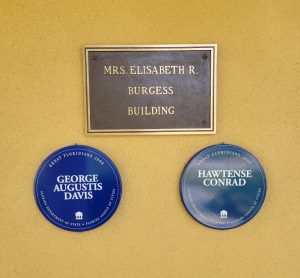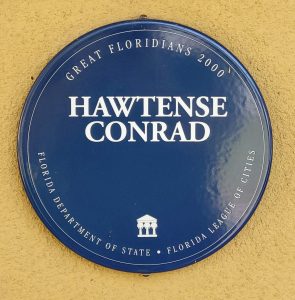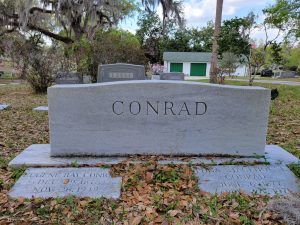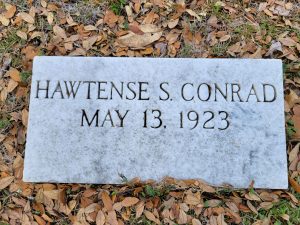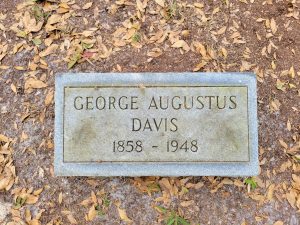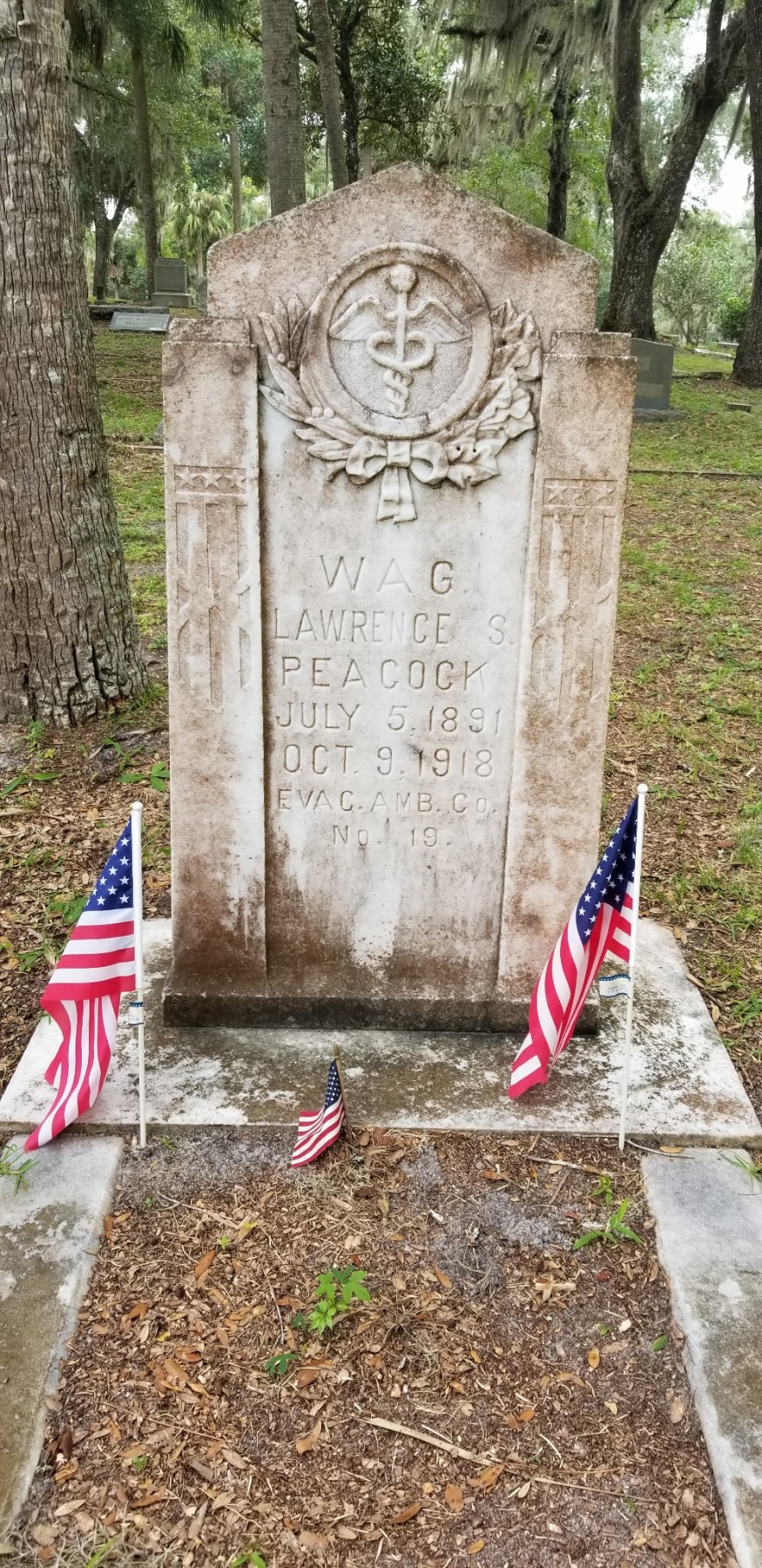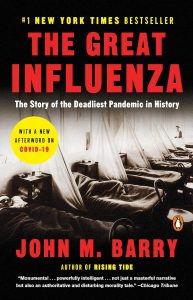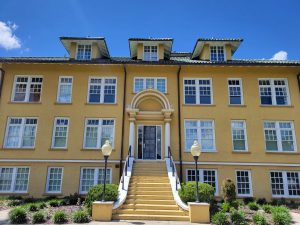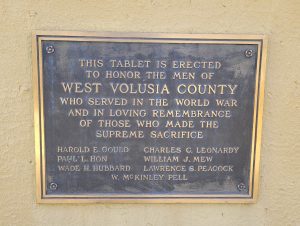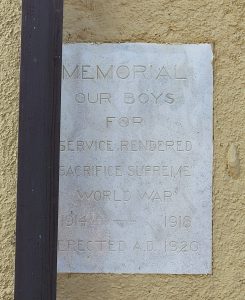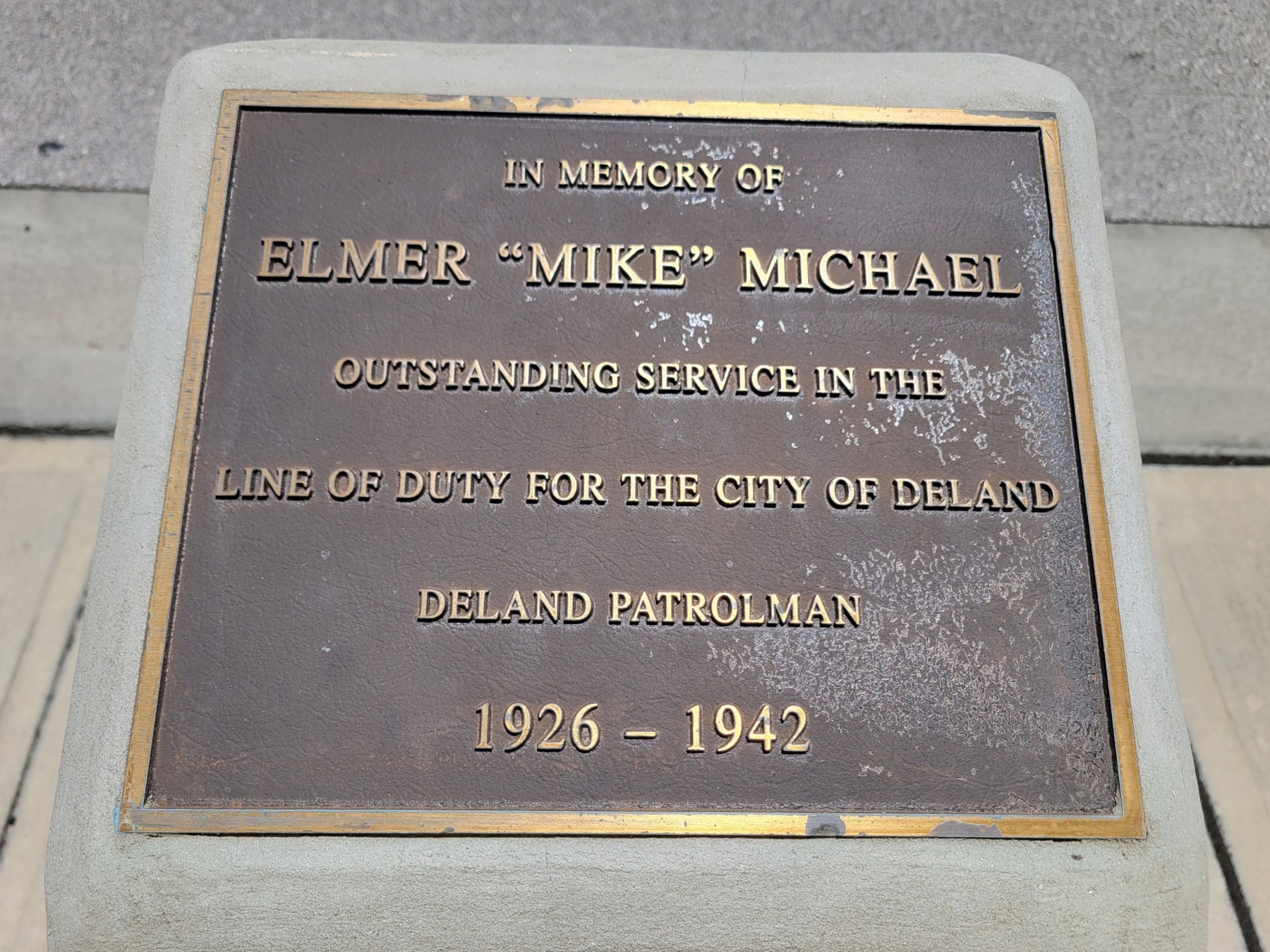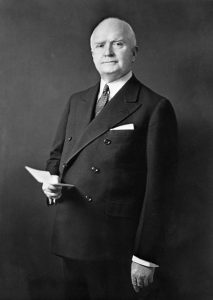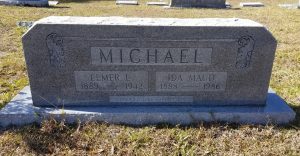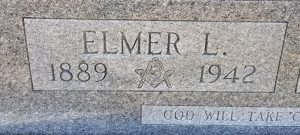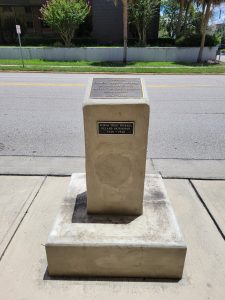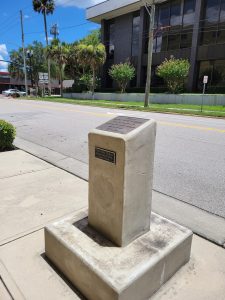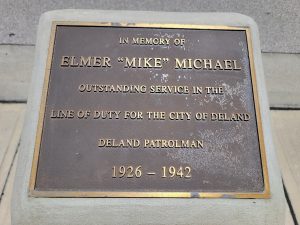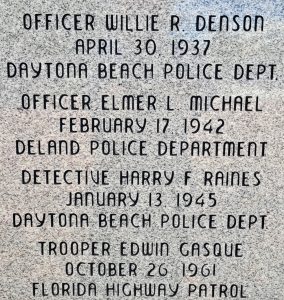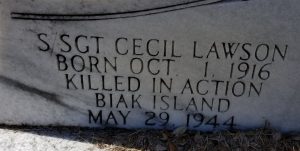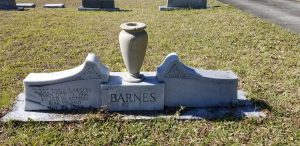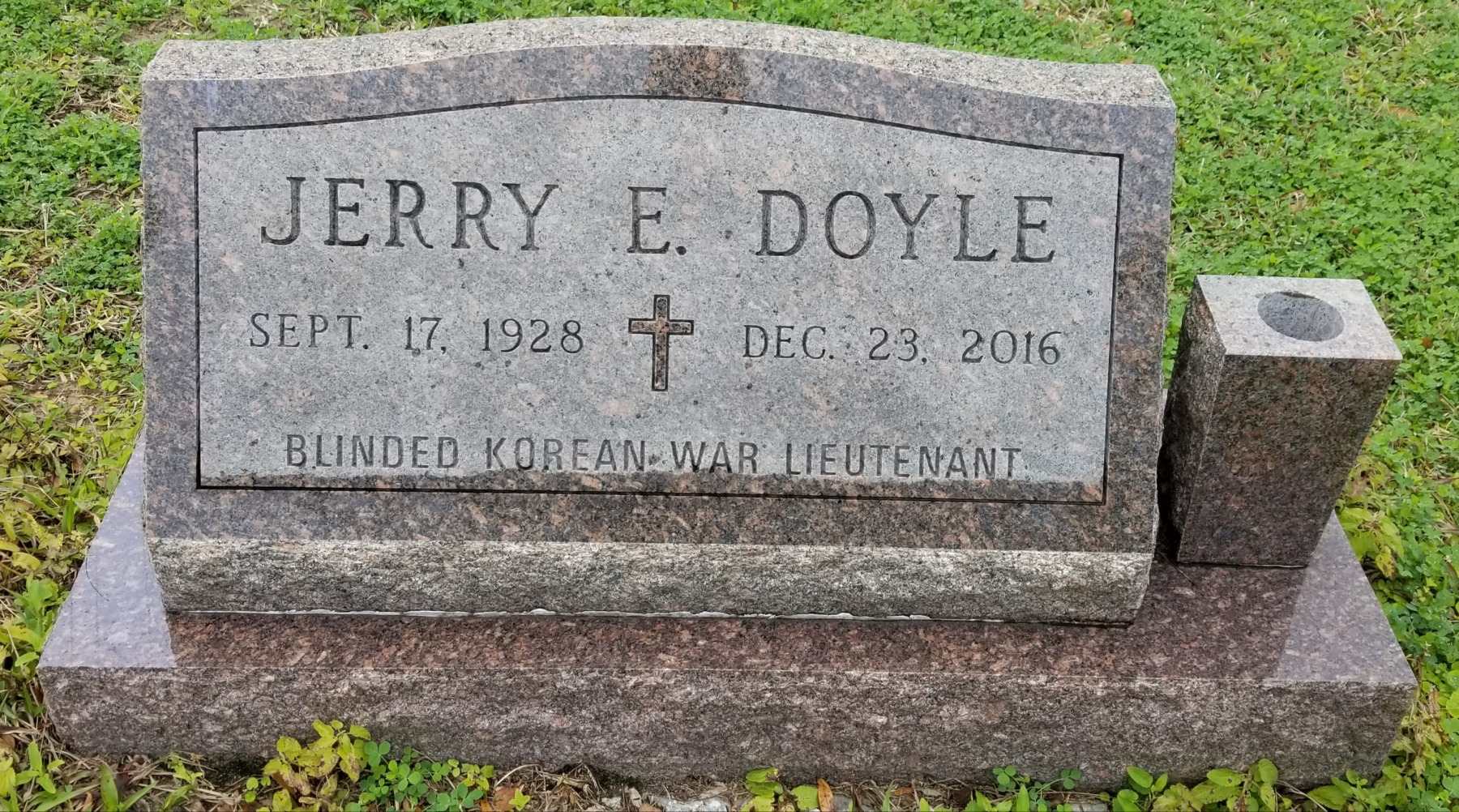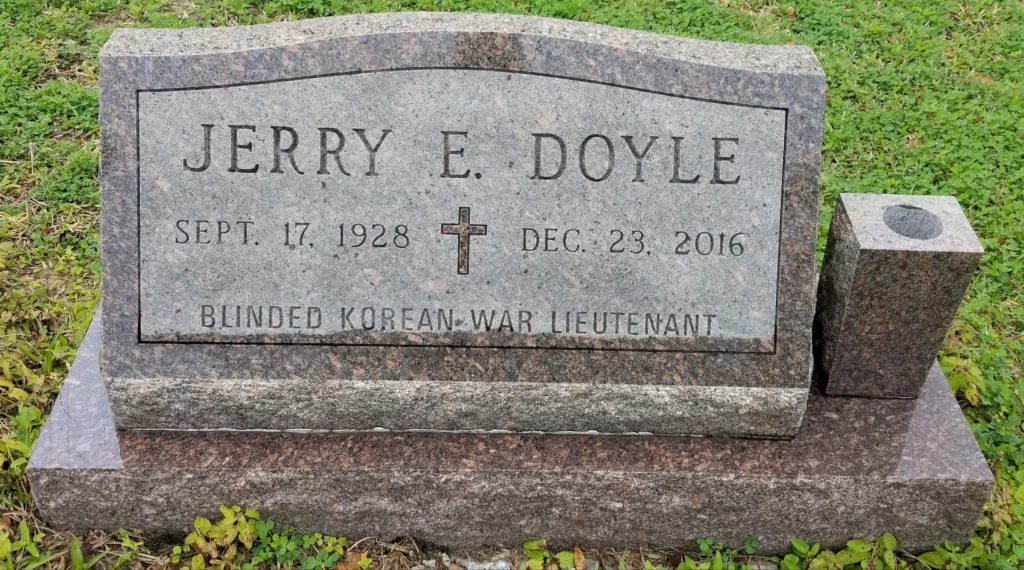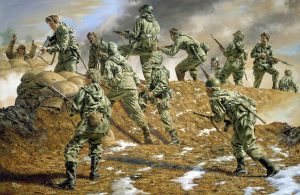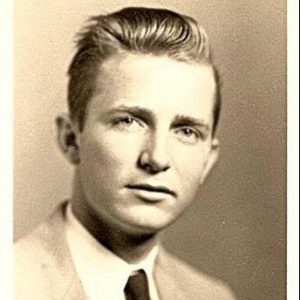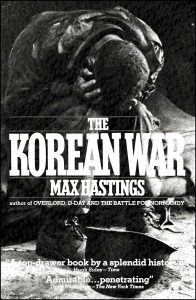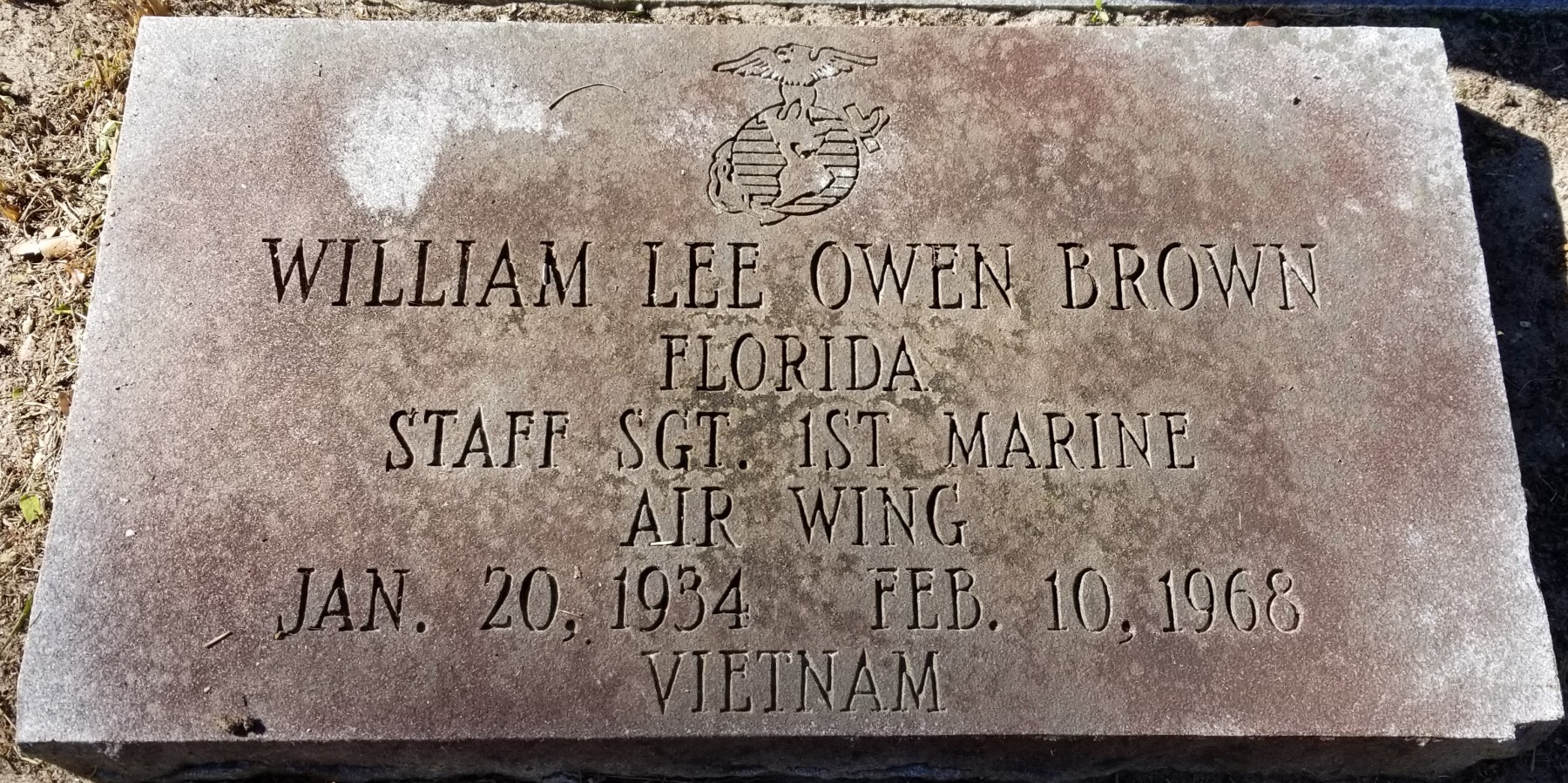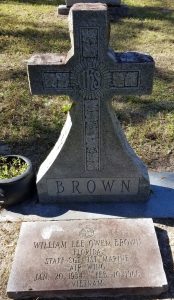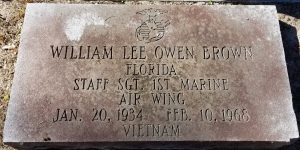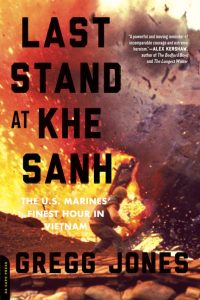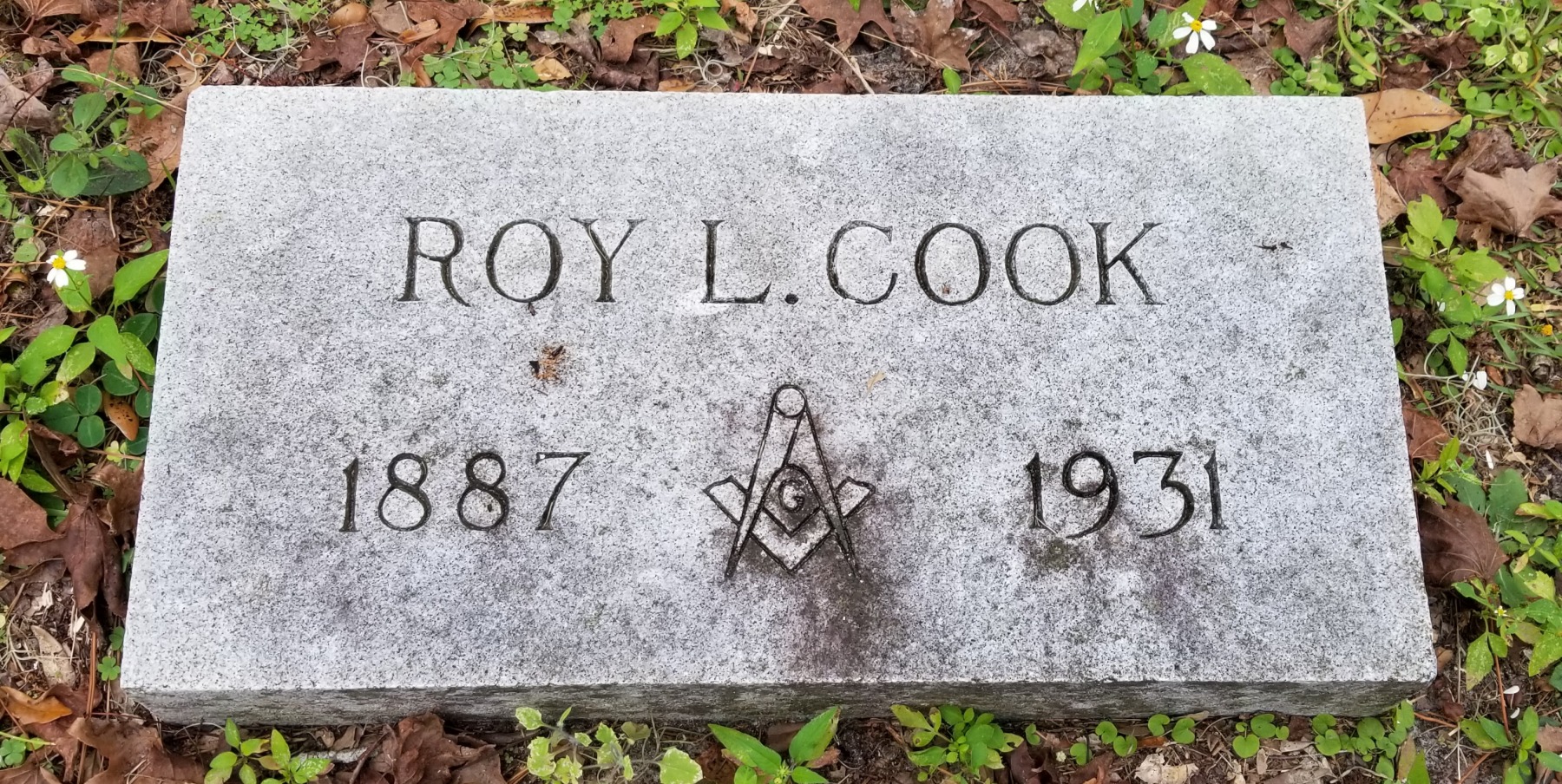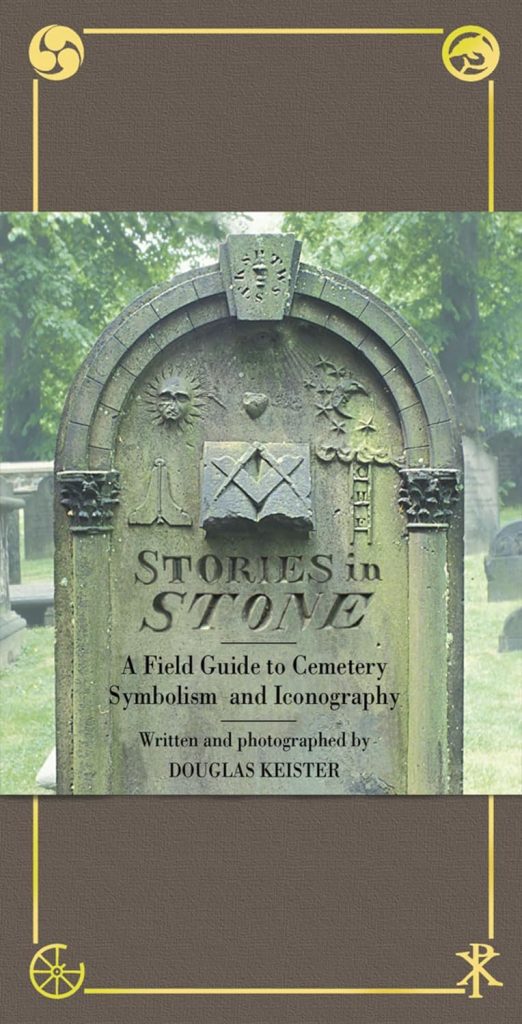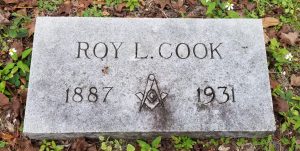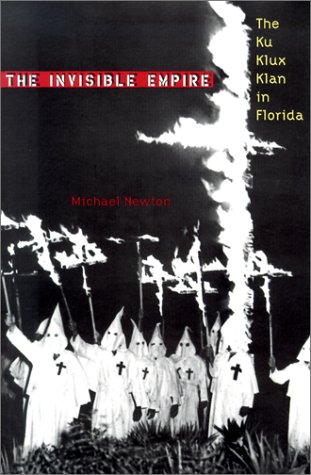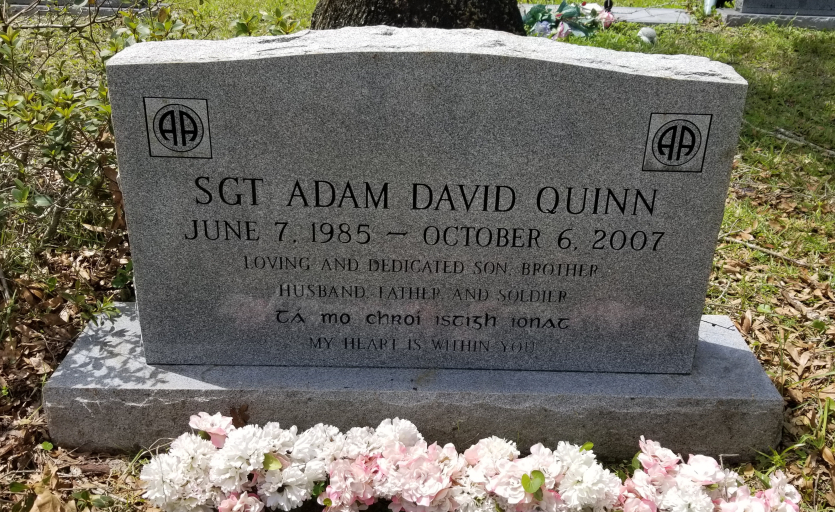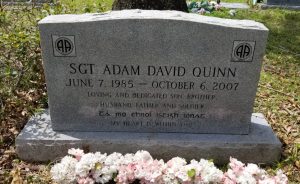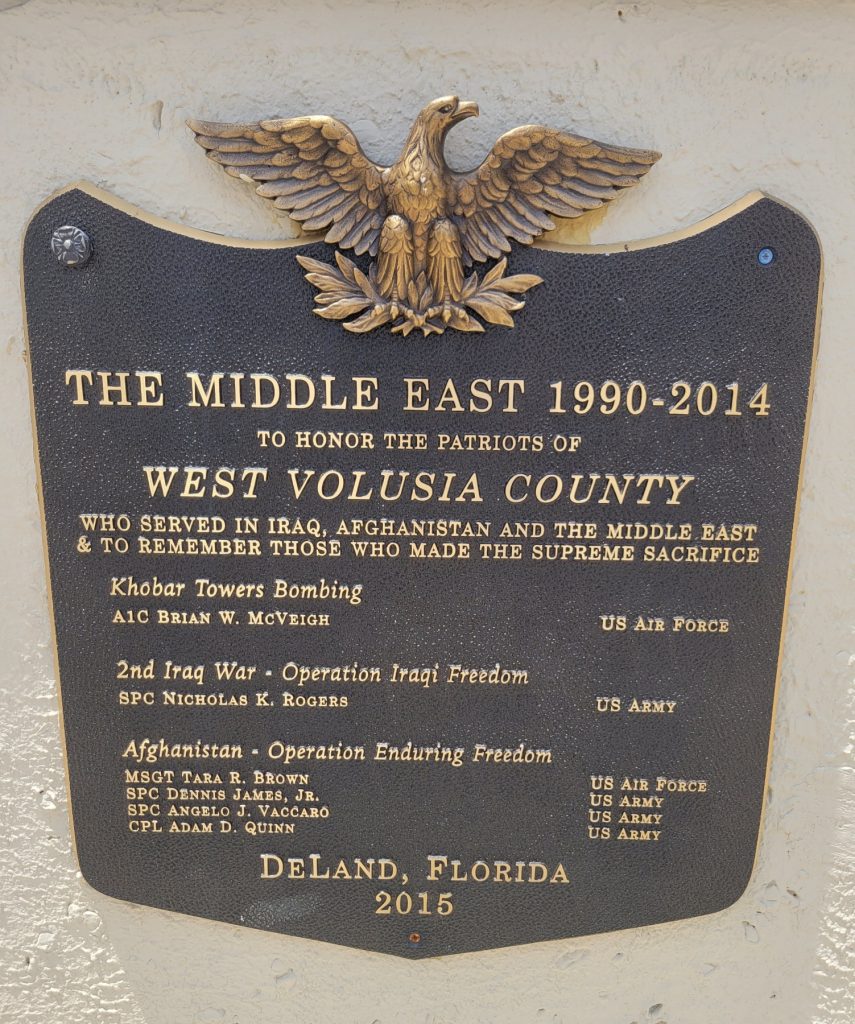Great Floridians 2000 Hawtense Conrad and George Davis of DeLand
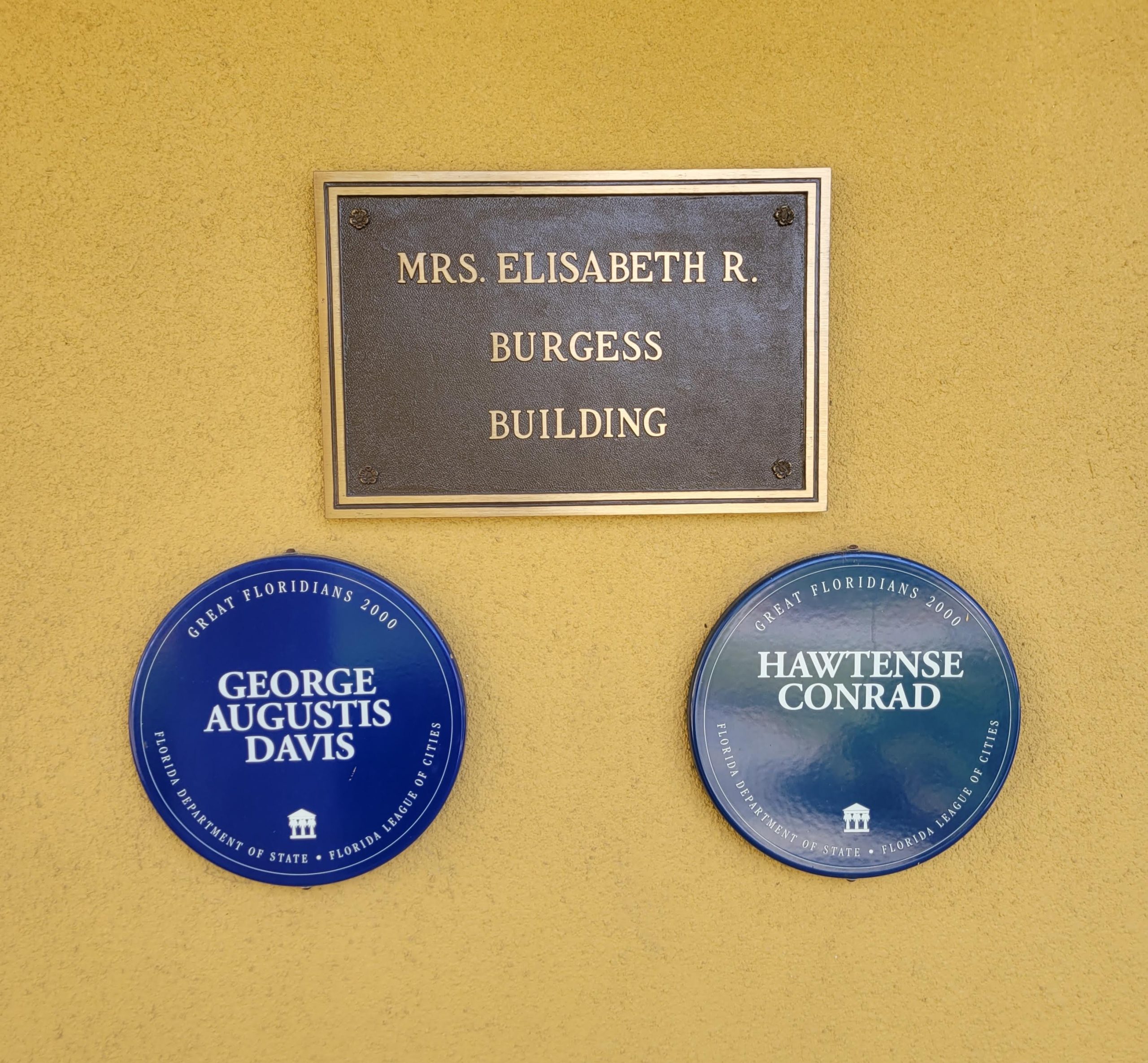
Great Floridians 2000 Hawtense Conrad and George Davis of DeLand
The Great Floridians 2000 program recognizes individuals who distinguished themselves through their philanthropy, public service, or personal or professional service, and who have enhanced the lives of Florida’s citizens. The Great Floridians 2000 program honors Hawtense Conrad and George Davis of DeLand, Florida.
Members of the public nominated individuals by submitting a Great Floridians 2000 application to the state. The Great Floridians 2000 Committee, a group of seven distinguished historians from throughout Florida, was responsible for periodically reviewing and approving applications.
The program began in 1998 and was completed in 2000.
The distinctive blue plaques honor the men and women in the program. Plaques are attached to buildings or structures in the cities where the designee left their mark. The plaques do not contain biographical information. Many plaques have been removed and are no longer on display.
The official biographies published as part of the Great Floridians 2000 program are shown below. The information published by the state may or may not be accurate.

Hawtense Conrad
Born in 1923, bought the Henry DeLand House in 19888 and donated it to the city of DeLand to house the collection of the West Volusia Historical Society. She also donated furniture and her time to both the DeLand House and the Stone Street Museum. She helped to establish the DeLand Naval Air Station Museum and rebuild the old African American hospital located in Bill Dreggors Park.
In 1997, she donated funds to build the Robert M. Conrad Research and Educational Center in her husband’s honor. Conrad was generous to organizations involving children and the handicapped. She belonged to the Polish American Pulaski Club, Fraternal Order of Eagles Auxiliary, Disabled American Veterans Auxiliary, Settlement for the Creative Arts, and the Lake Beresford Garden Club. She was also a charter member of Women of the Moose. In 1999, she was named “Philanthropist of the Decade” by the West Volusia Historical Society and West Volusia Citizen of the Year by the DeLand Breakfast Rotary Club. Conrad was also awarded the Gorge Schildecker Philanthropy Award by the Volusia County Trusts and Estates Council.
Hawtense Conrad died in 2000. Her Great Floridian plaque is located at the Burgess Building II, 230 North Stone Street, DeLand.
George Augustus Davis
Born in 1858 in Fayetteville, Georgia, attended Middle Georgia College and the Atlanta Medical College, graduating from the latter in 1890. Davis practiced in Atlanta until 1894 when he developed tuberculosis and relocated to DeLand.
Dr. Davis served as city and county health officer, physician for the Florida East Coast and Atlantic Coast Line Railways, and was a charter member of the DeLand Rotary Club. He was president of the DeLand Chamber of Commerce, a member of the Masonic Lodge, the Elks Club, Odd Fellows, Woodmen of the World, and the Volusia County Medical Association.
Dr. Davis died in 1948. His Great Floridian plaque is located at the Old DeLand Hospital 240 North Stone Street, DeLand.
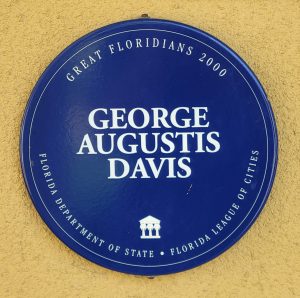
Both Conrad and Davis are buried in Oakdale Cemetery in DeLand, FL. Hawtense Conrad’s husband, Robert, is also the recipient of a Great Floridians plaque. A future post will highlight Robert Davis.
The headstone of Hawtense Conrad does not contain her death date. She passed away on July 4, 2000, at age 77. You may find an online memorial for Hawtense Conrad HERE.
George Augustus Davis, the “Dean of Florida Physicians,” passed away early on the morning of February 20, 1948, after a lengthy hospital stay. You may find an online memorial for Davis HERE.
I hope you have enjoyed my post on the Great Floridians 2000 Hawtense Conrad and George Davis of DeLand, Florida. Please see my other Great Floridians 2000 posts HERE.
This post may contain affiliate links. If you click these links and make a purchase, I may receive a small commission. This commission does not affect any price that you pay. All views and opinions provided are my own and are not influenced by affiliate programs or sponsors who provide products.

